The iPhone email app game has changed a lot over the years, with the only constant being that no app seems to remain consistently at the top. Right now, two of the most popular options are Airmail and Spark. Let’s take a look at what sets them apart.
The Contenders
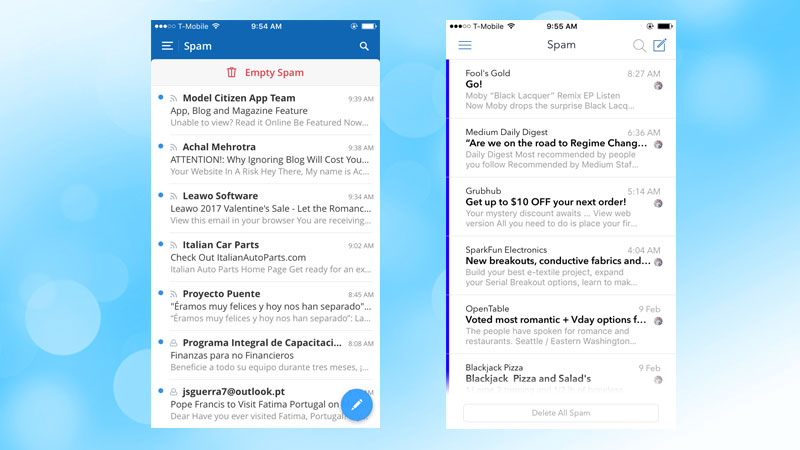
Spark on the left, Airmail on the right
It’s impossible to sift through the countless email apps in the App Store. Worse, it seems like any time an app does well, like Mailbox, Sparrow, or Acompli, that app gets purchased by some corporation and then folded into some other service (or killed off completely). For now, two of our favourites, Airmail and Spark seem safe. So let’s take a look at them:
- Airmail ($7.99): Airmail was available on Mac first, and happens to be our favourite Mac email client. That desktop pedigree shows in the iPhone app too, as Airmail’s appeal comes from the sheer amount of customisation options available in it. Alongside all the normal email features, like support for multiple accounts using standards like Gmail, Exchange, IMAP, or POP3, Airmail also has dozens of advanced features. This includes options like location-based notifications, customisable swipes, and more.
- Spark (Free): Spark launched on iPhone first, but the Mac app followed quickly thereafter. The mobile-first attitude carries through in the design, as Spark is much simpler and easier to use than Airmail. Spark feels very much like a spiritual successor to Sparrow, so if you loved that app at any point, Spark may be up your alley. As you’d expect, Spark supports Gmail, Exchange, and IMAP email accounts as well as options for a unified inbox.
While both Spark and Airmail are fine email apps, they both have different strengths, so lets dial in exactly which app is best suited for you.
Spark Is Great for Automated Email Sorting and Smart Notifications
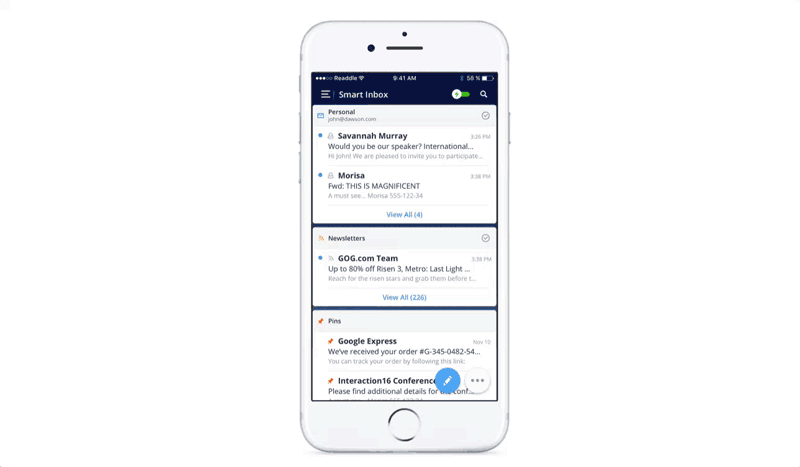
Spark’s main pitch is its “intelligence.” It has a “smart” inbox, “smart” search, and “smart” notifications. What this means in reality is automation, but regardless of what you call it, it works well for anyone who doesn’t want to fiddle around and sort their email manually.
The smart inbox is the most important thing Spark does. Spark detects if an email is personal, a newsletter, or a notification style of email, then groups those emails together into batches. It then uses that same system to send you notifications for only important emails, which are usually the ones classified as personal. Of course, you can always set up notifications for every email, but Spark’s appeal is that you don’t have to do that. In my experience, this has always been pretty smart. I always get notifications for any email that’s a reply to something I’ve sent, and then I get a handful of notifications from specific senders, like anyone here at Lifehacker or my parents. It’s not perfect, but I generally don’t miss anything too important.
The search in Spark is also billed as smarter, which in this case means you can use natural language to search, like “attachments from Andy from last week.” It’s helpful if you search through your email a lot.
Airmail has some of these features as well, but they’re not as much of a focus. Airmail doesn’t have any special inbox sorting options, but it does support smart folders and plenty of other manual sorting options.
Airmail also has a smart notification feature, though it doesn’t seem as robust or intelligent as Spark’s system. Instead, Airmail’s main notification-related strength is its support for VIPs, with which you only get notifications for emails from specific senders. Search is very much about manual control instead of natural language, where you can sort your searches with filters to find what you’re looking for.
In short, Spark is about automation, while Airmail focuses on manual control. If email is a service you use and is not some deep connection to important aspects of your life, Spark’s automated controls simplify your email without too many quirks. If your email is extremely important, Airmail gives you the manual controls you need to get the right information when you need it.
Airmail Is the Choice for Anyone Who Likes to Customise
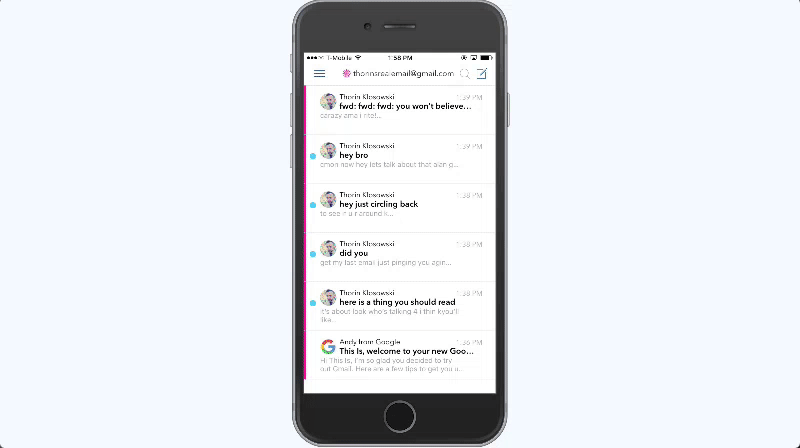
If you like to customise your email experience, you want Airmail. Airmail has an absurd amount of customisation options, from specific swipe actions for your inbox to location-specific notifications.
The amount of customisation options in Airmail is hard to run through here, but rest assured, you can bend this app to your will. Personally, my favourite little change you can make is the message preview size. You can alter the number of lines shown for an email on the inbox screen, making it much easier to triage emails without ever opening them. Everything else you expect to be here is here, like labels, filters, and different signatures. There’s countless other options too, including setting up systems to move emails between accounts, resizing attachments, automatically CC’ing people on certain threads, and more. You’ll find help setting up all these options over on Airmail’s docs page, which is worth a look to see all the stuff Airmail can do.
Spark has a lot of customisation options as well, but it’s not as much as Airmail. You can change swipe behaviour, swap out different widgets, change some parts of the sidebar, and choose from a couple different themes. That’s plenty for some people, so if customisation isn’t important to you, Spark should be fine.
Airmail Integrates With Way More Services
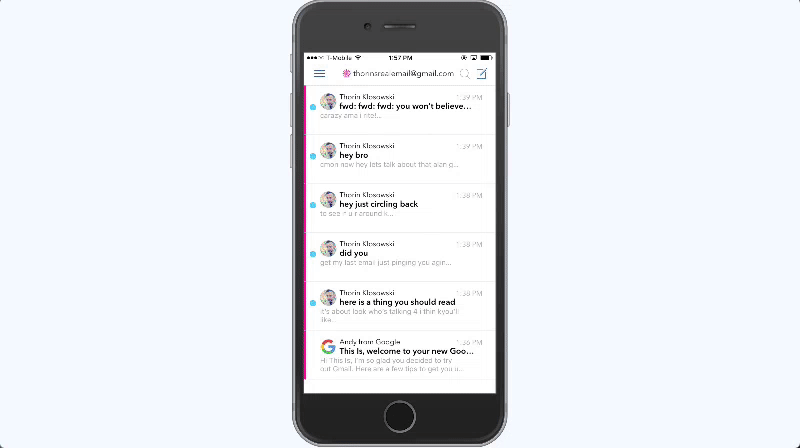
A growing trend with productivity apps is app integration, making it so you can quickly send data from one app to another. In the case of email apps, this typically means linking your email to cloud storage services, calendars, or to-do lists. In this space, Airmail blows Spark out of the water.
Airmail integrates with Apple’s built-in calendars, reminders, and pretty much every cloud storage service out there alongside tons of third-party apps like Wunderlist, Fantastical, Trello, Evernote, Editorial, GitHub, and more. It also allows you to open up links in several third-party browsers, including Chrome, Firefox, and Mercury. Beyond that, Airmail even supports Workflow, which allows you to create your own custom actions linking Airmail to other apps.
Spark doesn’t come close to Airmail in this regard. It integrates with the main cloud storage services alongside some big third-party options, like OneNote, Evernote, and Pocket.
Airmail is the clear winner here. If you use your email to manage different tasks, create to-dos, link to various notes, or whatever else, Airmail is the app you want to use.
The Verdict: Spark Is the Better App for Most People, but Airmail Is a Power-User’s Dream
Spark and Airmail are distinctive enough that it’s pretty easy to decide which is best for you. If you lament the loss of minimal email apps like Mailbox and Sparrow, Spark is the app you want. If you just want a way to check email, maybe reply to some occasionally, then again, Spark is the app you want. Being free, it’s easy to give it a test drive to see if it works for you.
Airmail comes with that $7.99 barrier of entry, but it’s well worth the asking price if you consider yourself a power-user. It is customisable to an extreme degree and should suit anyone who relies on email for work. If you spend a lot of time in your email app on your phone, Airmail makes that experience much better.
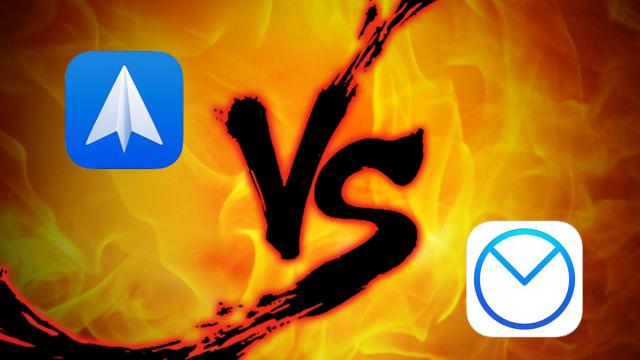
Comments